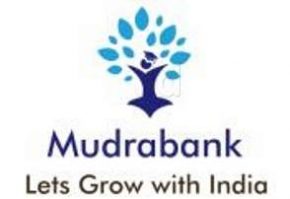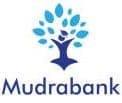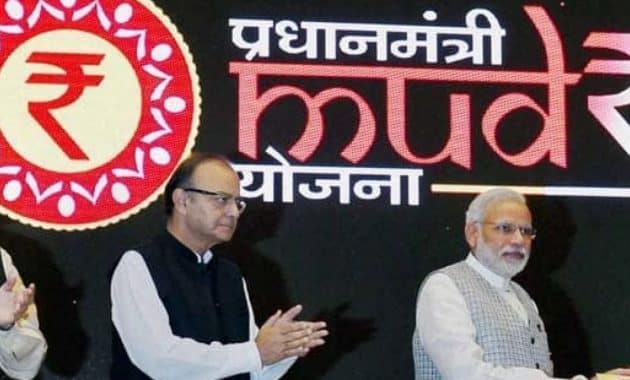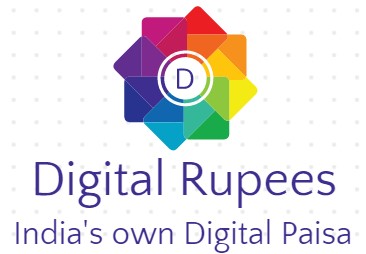Mudra Bank Interest Rate

Page Contents
Unlocking Your Business Dreams: A Comprehensive Guide to Mudra Bank Loan Interest Rates
Starting or expanding a business requires a clear vision, a solid plan, and, most importantly, access to capital. For millions of aspiring entrepreneurs in India, the Pradhan Mantri Mudra Yojana (PMMY) has emerged as a game-changer. This flagship government scheme, often referred to as a “Mudra Bank loan,” provides affordable and collateral-free funding to micro and small enterprises. While the scheme’s benefits are widely known, a key question that often arises is: “What are the exact Mudra loan interest rates?”
This detailed guide aims to demystify the interest rates for Mudra loans. We will explore the factors that influence the rates, provide insights into the different loan categories (Shishu, Kishor, and Tarun), and offer a comparative overview of rates offered by various banks. Our goal is to equip you with the knowledge to make an informed decision and secure the best possible Mudra loan for your business.
Understanding the Core Concept: There Is No “Mudra Bank”
First and foremost, it’s crucial to clarify a common misconception. There is no single entity named “Mudra Bank.” The Micro Units Development and Refinance Agency (MUDRA) Ltd. is a refinancing institution. It provides financial support to Member Lending Institutions (MLIs), which include:
Private Sector Banks
Regional Rural Banks (RRBs)
Cooperative Banks
Small Finance Banks (SFBs)
Micro Finance Institutions (MFIs)
Non-Banking Financial Companies (NBFCs)
Therefore, when you apply for a “Mudra loan,” you are actually applying to one of these MLIs, which use the PMMY framework and MUDRA’s refinancing support to offer the loans. This is why the interest rates are not uniform and can vary from one bank to another.
Why Mudra Loan Interest Rates Are Not Fixed
The interest rate on a Mudra loan is not a single, fixed number. It is dynamic and depends on several critical factors. The MLIs are given the autonomy to determine the interest rates based on RBI guidelines and their own internal policies. The primary factors that influence the final rate are:
Your Business Profile and Creditworthiness: Banks assess the risk associated with your loan application. A well-established business with a clear business plan, a history of good financial health, and a satisfactory credit score will likely be offered a more competitive interest rate. While Mudra loans are designed to support new and small entrepreneurs who might not have a strong credit history, a good financial track record can still work in your favor.
The Specific Bank or Lender: As mentioned earlier, each MLI sets its own interest rates. Public sector banks are often known for offering lower rates compared to private banks or MFIs, but this is not a hard-and-fast rule. It is essential to compare the rates and policies of different lenders before you apply.
The Loan Category (Shishu, Kishor, Tarun): The Mudra scheme is structured into three distinct categories based on the loan amount. The interest rate often changes with the loan category, reflecting the level of risk and the nature of the business.
The Type of Loan: Mudra loans can be availed as a term loan, working capital loan, or even non-fund-based facilities like a bank guarantee. The interest rate may differ depending on the type of facility you choose.
RBI’s Monetary Policy: As with all loan products in India, Mudra loan interest rates are indirectly influenced by the Reserve Bank of India’s (RBI) monetary policy. Changes in the repo rate and other policy rates can affect the base rates of banks, which, in turn, impact the final interest rate charged to the borrower.
A Deep Dive into the Three Mudra Loan Categories
The PMMY framework simplifies the lending process by categorizing loans into three distinct products. This classification helps banks and applicants align the loan amount with the stage of the business’s growth.
Mudra Shishu Yojana: This is the entry-level loan category, providing financial support to businesses that are in their nascent stages or have just started.
Loan Amount: Up to ₹50,000
Targeted Applicants: First-time entrepreneurs, small-scale vendors, hawkers, artisans, and micro-business owners who need a small amount of capital to get their venture off the ground.
Interest Rates: Interest rates for Shishu loans are generally the lowest among the three categories. While the provided text suggests rates around 10% to 12%, these are indicative. Many public sector banks may offer rates at or slightly above their Base Rate, making them highly competitive. The processing fee for Shishu loans is often waived by most banks, which is a significant advantage for new businesses.
Mudra Kishor Yojana: This category is designed for businesses that have been in operation but require additional funds for expansion or to meet their working capital needs.
Loan Amount: From ₹50,001 up to ₹5,00,000
Targeted Applicants: Businesses looking to purchase new machinery, upgrade technology, increase inventory, or meet other operational requirements.
Interest Rates: The interest rates for Kishor loans are higher than those for Shishu loans, as the loan amount and the associated risk are greater. The provided text indicates a range of 14% to 17%. However, competitive rates are available from various banks. The interest rate will depend heavily on the borrower’s business plan and financial stability.
Mudra Tarun Yojana: This is the highest loan category under the PMMY, catering to established micro-enterprises that have a proven track record and are ready for significant expansion.
Loan Amount: From ₹5,00,001 up to ₹10,00,000
Targeted Applicants: Businesses that are ready to scale up their operations, diversify their product lines, or enter new markets.
Interest Rates: Tarun loans typically have the highest interest rates among the three categories, with the provided text suggesting rates starting from 16%. This is because the loan amount is substantial, and while collateral-free, the risk to the lender is higher. However, a strong business history, good credit score, and a robust business plan can help you negotiate a better rate.
The Role of Nationalized vs. Private Banks
The provided text rightly highlights a key difference in lending practices: “nationalized banks are charging less interest rates than private banks.” This observation holds true for many government-backed schemes, including the PMMY. Public sector banks, or nationalized banks, often have a more socially oriented mandate and may offer slightly lower interest rates to promote financial inclusion and entrepreneurship. Private banks, on the other hand, operate with a strong commercial focus and may factor in a higher risk premium, leading to potentially higher interest rates.
How to Secure a Mudra Loan at a Lower Interest Rate
While the interest rates vary, there are several strategies you can employ to get the most competitive rate for your Mudra loan:
Maintain a Good Financial History: Even without a formal CIBIL score, a clean banking record is invaluable. Ensure you have no past loan defaults and maintain a good transaction history in your bank accounts.
Prepare a Solid Business Plan: A well-researched and detailed business plan demonstrates your commitment and reduces the perceived risk for the lender. Showcasing your revenue projections, market analysis, and how the loan will be used to generate income can significantly improve your chances of getting a favorable rate.
Compare Lenders: Do not settle for the first bank you approach. Use online resources and visit multiple banks to compare their interest rates, processing fees, and other terms and conditions.
Engage with Your Banker: A good relationship with your bank manager can be beneficial. They can guide you through the application process and provide insights into the specific criteria their bank uses to determine interest rates.
Consider the “Mudra Card”: Some banks offer a “Mudra Card,” a debit card linked to your loan account. This card can be used to manage working capital needs and can sometimes lead to better terms due to a more transparent transaction record.
The Application Process and Important Safeguards
Applying for a Mudra loan has become more streamlined, with many banks offering online application portals. However, it is vital to be aware of the process and potential pitfalls.
Documentation: The required documents generally include identity and address proof, business proof, bank statements, and a detailed business plan. Having all documents ready and in order can expedite the process.
Beware of Scams: The provided text rightly warns against paying money for a Mudra loan. The PMMY is a government initiative, and there are no agents or middlemen authorized to charge a fee for the application process. If anyone demands money or harasses you, report it immediately to the bank or on the official PMMY website.
Introducing the Mudra Bank Loan Interest Rate Calculator
As the provided content mentions, an interest rate calculator is an invaluable tool for potential borrowers. While we will soon provide a detailed interactive calculator, here is how you can manually estimate your EMI:
Formula:
= Principal Loan Amount
= Monthly Interest Rate (Annual Rate / 12 / 100)
= Loan Tenure in Months
Using this formula, you can input different interest rates and tenures to see how they impact your monthly EMI, allowing you to plan your finances effectively.
A Future of Entrepreneurship
The Pradhan Mantri Mudra Yojana is more than just a loan scheme; it is a catalyst for economic growth and self-reliance. By providing access to affordable credit, it empowers millions of individuals to turn their business ideas into reality. While the interest rates are a key consideration, understanding the nuances of the scheme, the factors influencing the rates, and the strategies to secure the best deal will ensure you are on the right path to entrepreneurial success. Always remember to do your research, compare your options, and approach the process with a clear and informed mindset.
Need MUDRA Loan, Click here to apply online. | Thanks to Janpaksh
Is a mudra loan interest-free?
Yes, a few banks are offering interest-free Mudra loans under the Shishu Scheme. Please visit the bank’s website to know more details.
What is the interest rate of the Mudra loan?
All banks have their own interest policy, and you will get a different interest rate in every bank. Please compare all banks’ interest rates before applying for a new Mudra loan.
Which bank is offering the cheapest interest rate on Mudra loans?
Right now the State Bank of India is offering the cheapest interest rate on Mudra loans. In some cases, SBI offers interest-free Mudra loans online. Click here to apply online.






